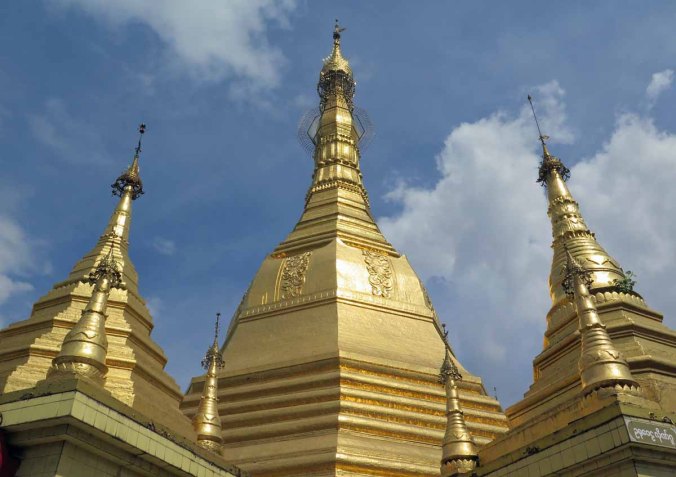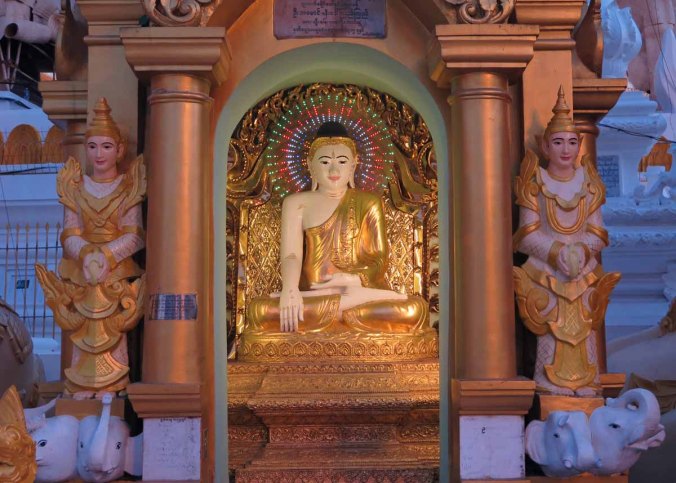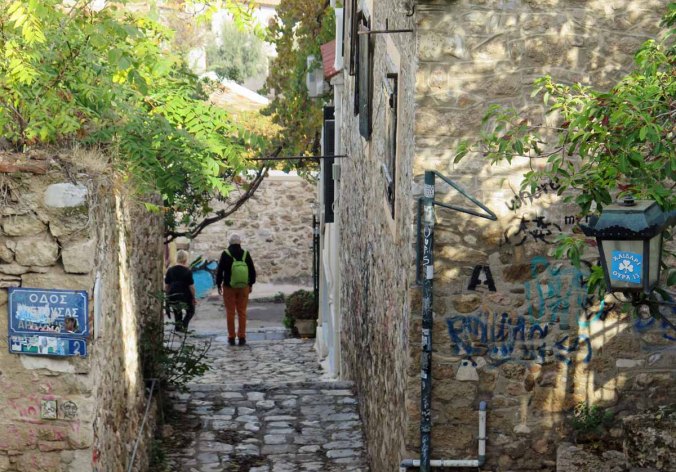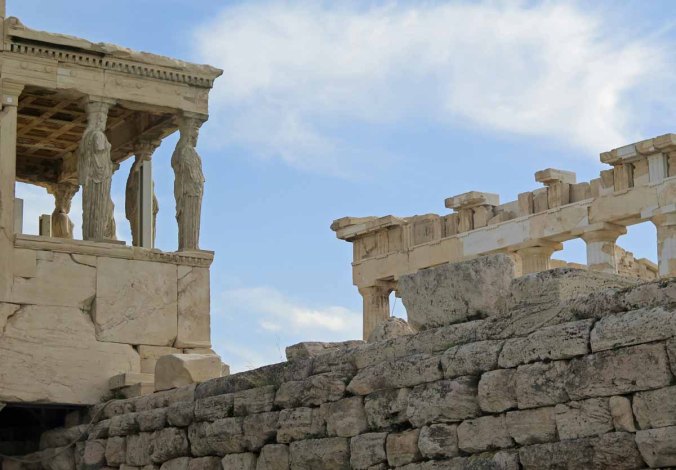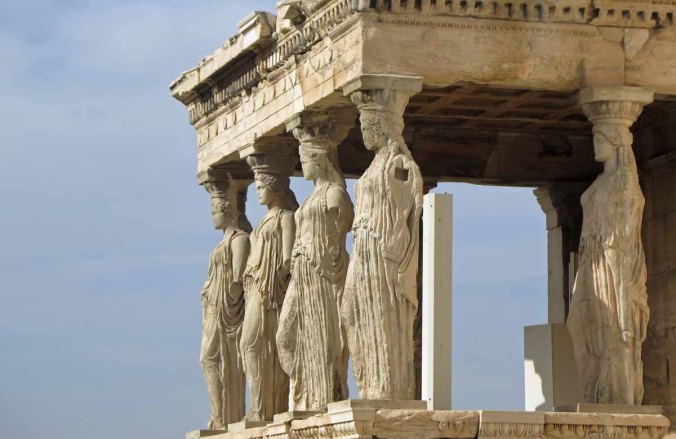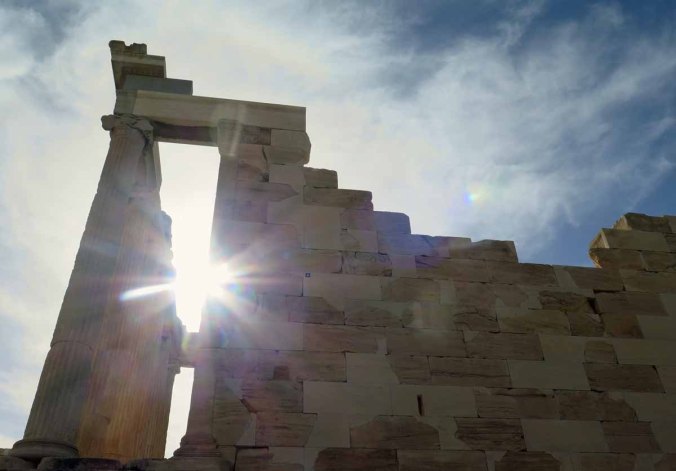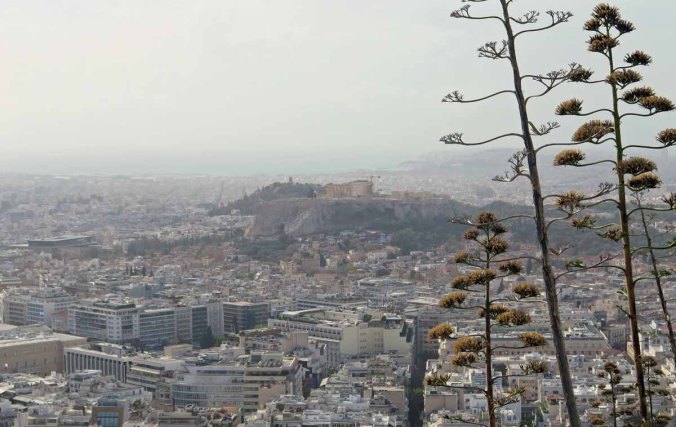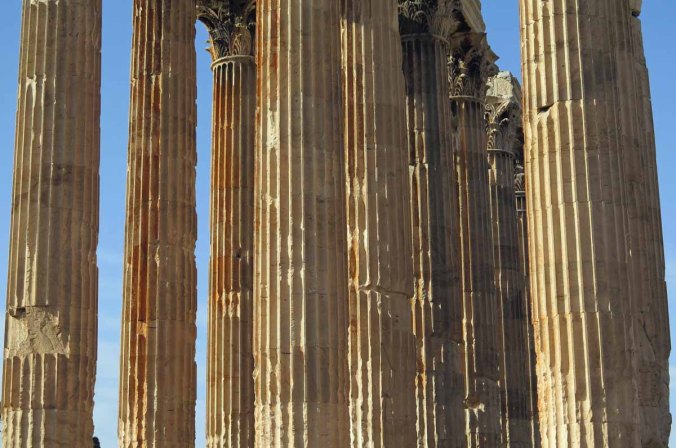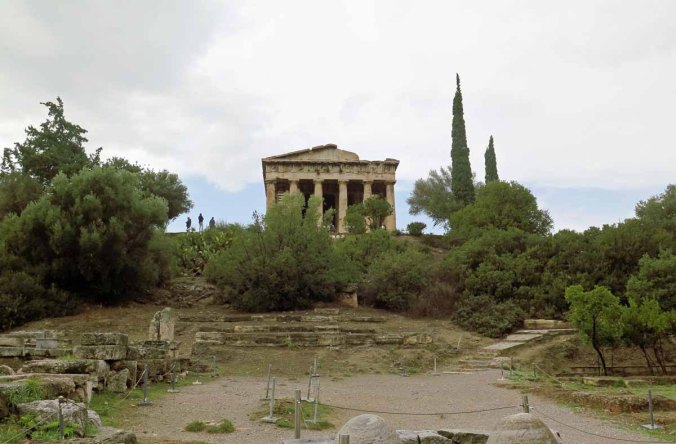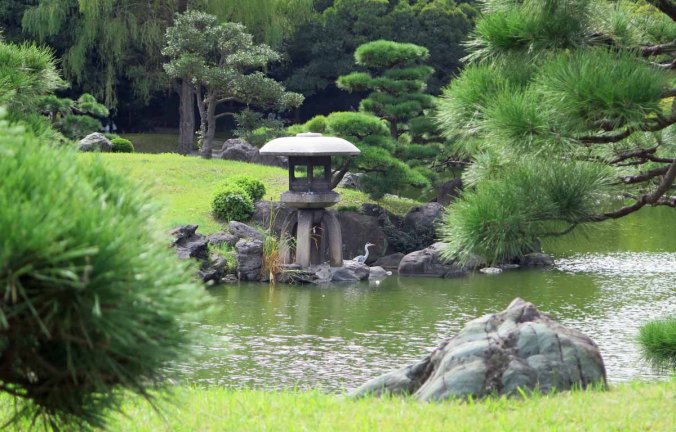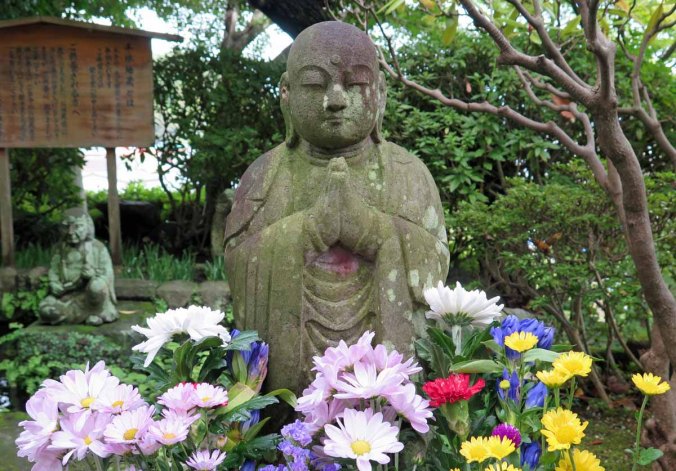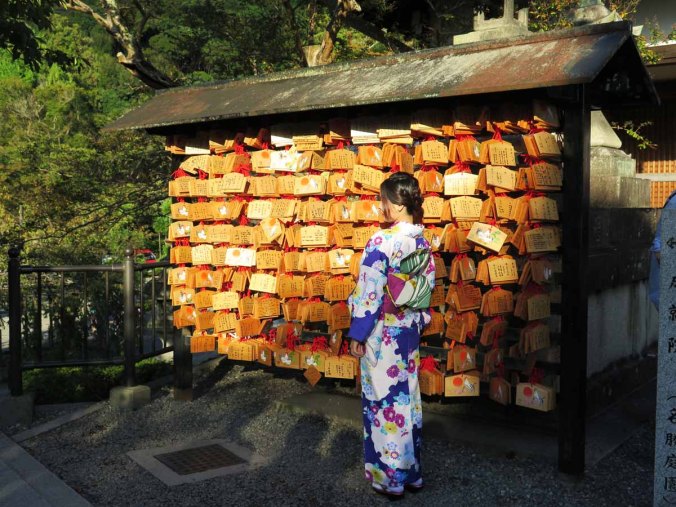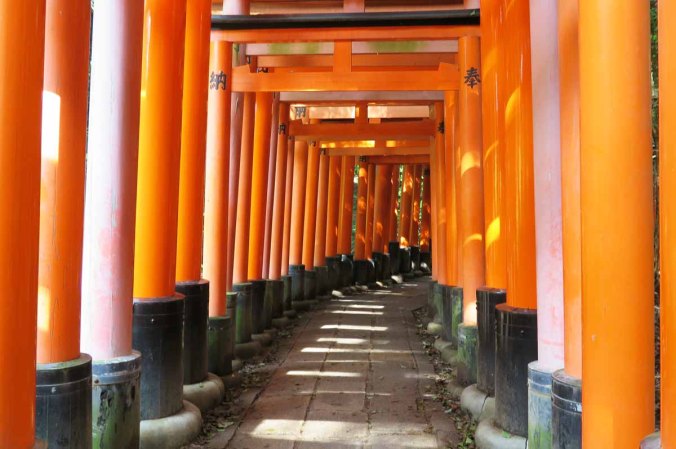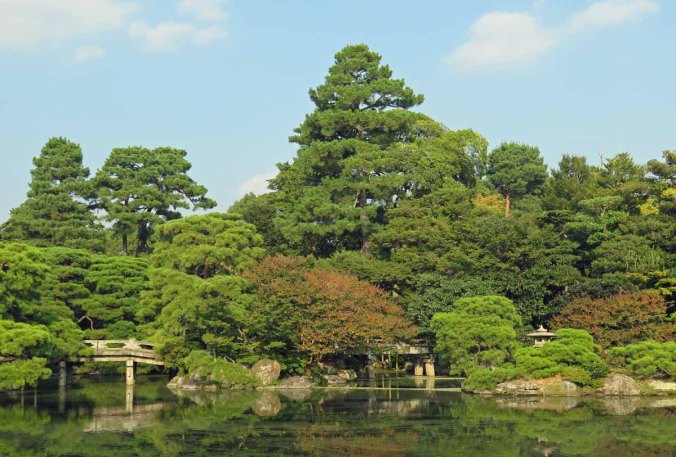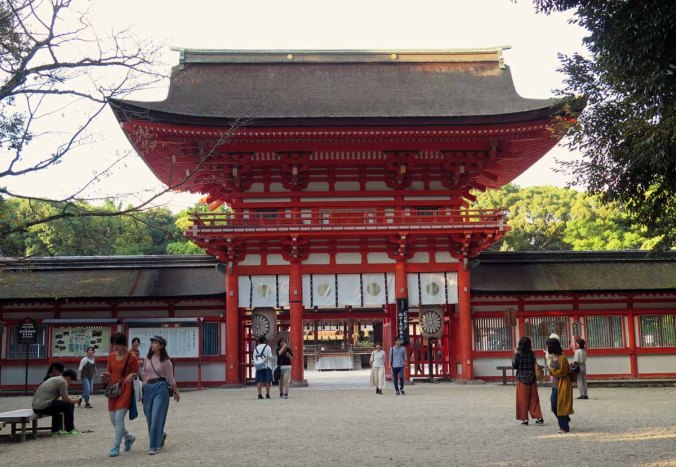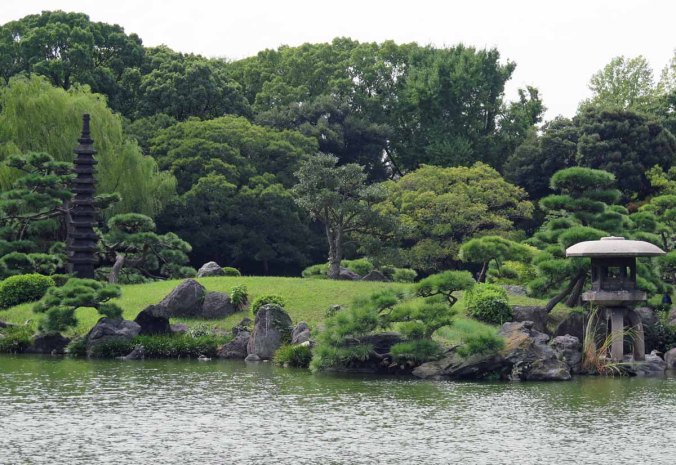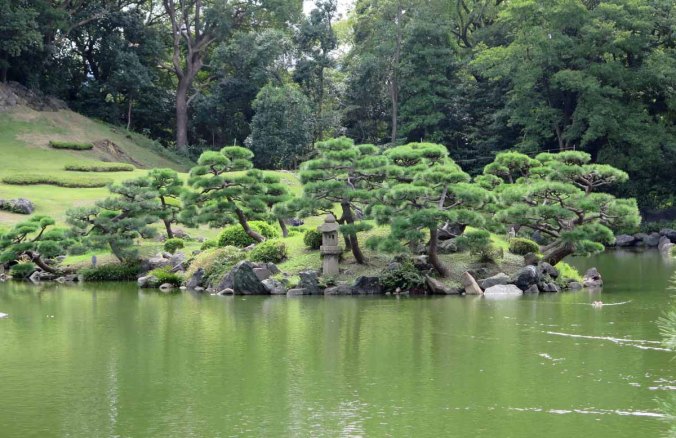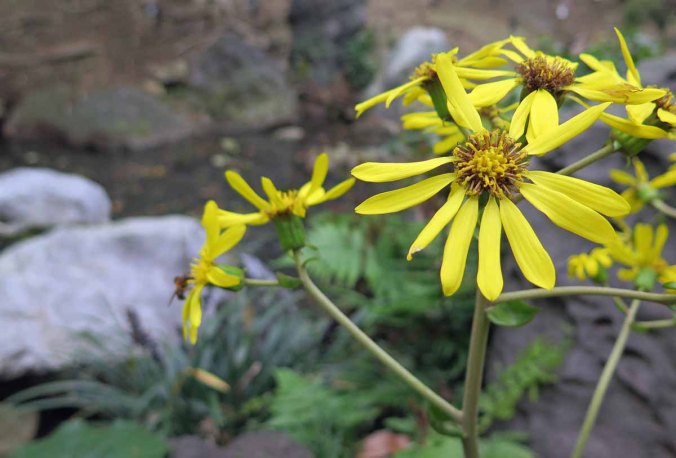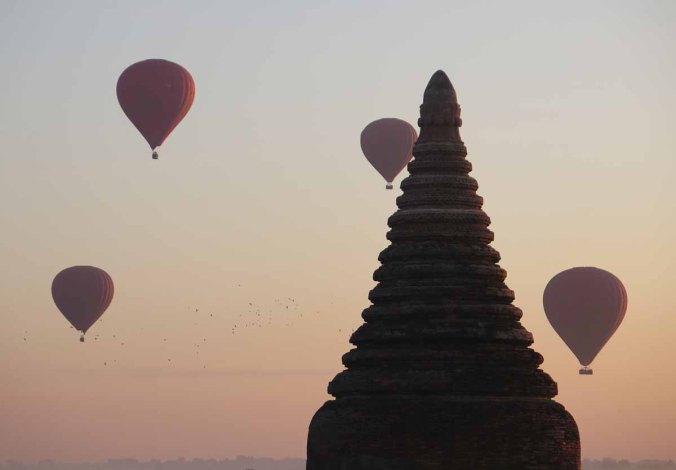
Bagan is the highlight of any trip to Myanmar, so I had high expectations.
Getting around by bike is a good way of seeing many of the temples. You can basically just go anywhere around Old Bagan and start temple-spotting.
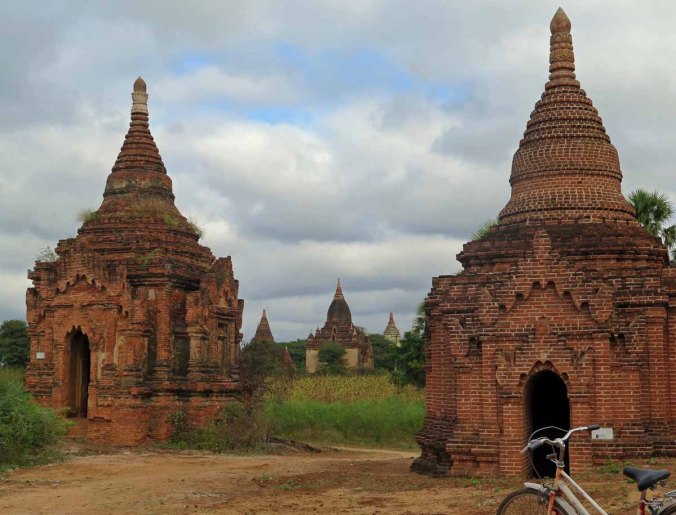

The main temples are a bit busy and there are usually stalls selling handicraft around them, but most smaller temples are completely empty and you have the place to yourself. You can also just take a turn into any side road to find lots of little temples, they are literally everywhere.
You can climb up some of the temples to get stunning views of nearby pagodas – this way you get an understanding of the scale of the place.


The most famous temples are usually larger, but in truth it doesn’t really matter where you go. The smaller temples can sometimes be more interesting simple because on an unusual detail or because you can explore by yourself.
From the most famous temples, my favourite was Ananda as it’s really unusual inside, full of Buddha statues in little carved nooks. But the most fun I’ve had was simply exploring aimlessly and stopping where it looked good – I don’t really think you can go wrong in Bagan.

The best thing is to actually find a temple off the beaten path to climb up and enjoy the view by yourself. You just need to wander around a bit until you find one (locals will often point it out). In these you may sometimes meet locals who will always eventually try to sell you postcards or paintings – although it’s obvious that they will want you to give them some money, it’s also a good opportunity to have a chat and learn a bit about local life.
At the most popular temples you’re approached by locals but you don’t have a chance to engage much.

Another popular activity is to watch the sunrise and sunset from the top of a pagoda.
I took a taxi (15,000MMK, a bit expensive) to watch the sunset. The pagodas can get quite busy, and especially since the 2016 earthquake, not many pagodas are available to climb, so everyone ends up in the same places.
I wanted the sunset at Bulethi temple, which has amazing views. It is a truly magical experience, seeing all the pagodas in the changing light and the countryside in different colours.




Watching a sunrise from a pagoda is a highlight of any trip to Bagan, so I woke up at 4h30am. A big crowd gathered at Bulethi temple, but it was definitely worth it. You have plenty of time to take in the atmosphere (and take a million photos) of the light changing over the misty pagodas.
When it’s time for sunrise, hot air balloons take to the skies and give the place a fairy tale atmosphere. It’s a unique and magical place and the sunrise alone brings it all together.
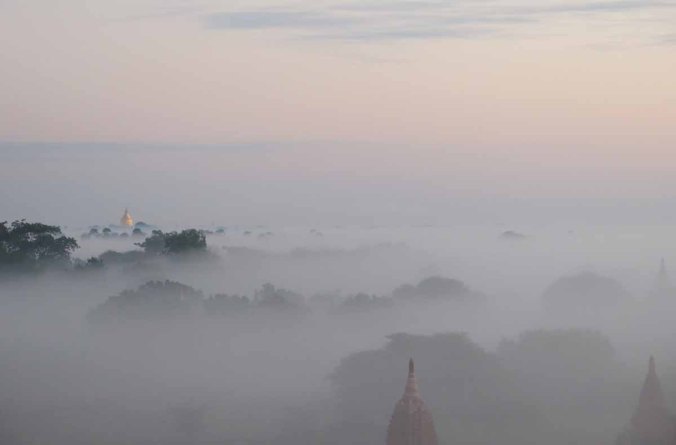






Mount Popa:
I took a shared taxi to Mount Popa, which is about 1h30 from Bagan. Mt Popa is a sacred mountain (of volcanic origin) with a pagoda at its top. Climbing the 777 steps to get there and fielding monkeys drinking from half-empty cans of Coke, you are greeted with great views over the countryside.

This is a nice trip to do as long as you have enough time in Bagan. You can book a shared taxi for 10,000MMK which picks you up at your hotel at 9am and drops you off at 2pm.

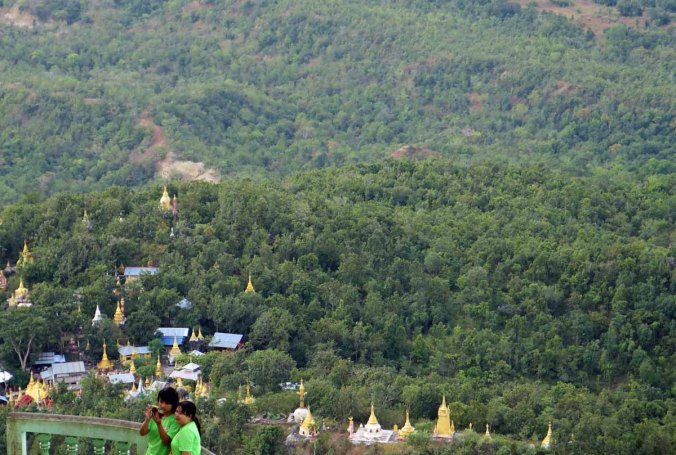


Food:
- I went for dinner at Sanon, a social enterprise training local youths to work at and run restaurants. The food is really great (dinner for one including drinks and tip for 8,500-11,000MMK) and it’s a good place to go to if you’re staying in Nyaung U.
- I had lunch at Moon, a popular vegetarian place close to Old Bagan. The food was really delicious and the place is great (lunch for one for 6,700MMK). They also have a great selection of juices.
- Weather Spoons is a popular place with tourists (and much better than its British counterpart). It’s a good place with a varied menu and strong cocktails for £1.50 (lunch including drinks and tip for 8,000MMK).
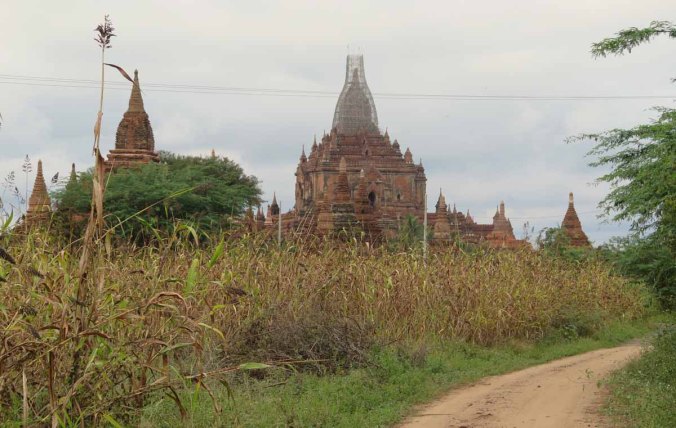


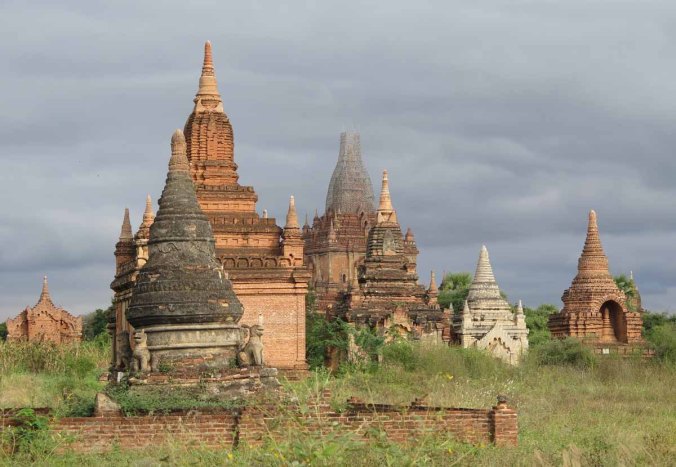
HOW TO DO IT:
There are many ways to visit Bagan. I chose to book everything independently but spending a bit on comfort.
- Go: I chose to fly in, which is definitely the fastest option. From Mandalay it was only 30min and $70 with Golden Myanmar.
- Stay: I stayed at Royal Bagan which was a great option – I paid £17 per night for a comfy double bedroom. Nyaung U is the area where most people stay, and that’s where you’ll find most restaurants and a few handicraft shops. In the evenings it’s a good place to go for dinner and a drink.
- Get around: Most people rent and electric bike to get around, but I got a normal bike (2,000MMK for half a day). You can cover a lot of ground just riding around and stopping at some pagodas along the way.




Bagan is a unique place. The countryside landscape filled with thousands of pagodas in a place that otherwise would be completely unremarkable really makes for a surreal sight.
I spent 4 days in Bagan which is a good amount of time to see everything without rushing. You can get a map with the key temples, but it’s more the scale of the site than the individual temples that matters, so you might as well just wander around and stops where looks good.
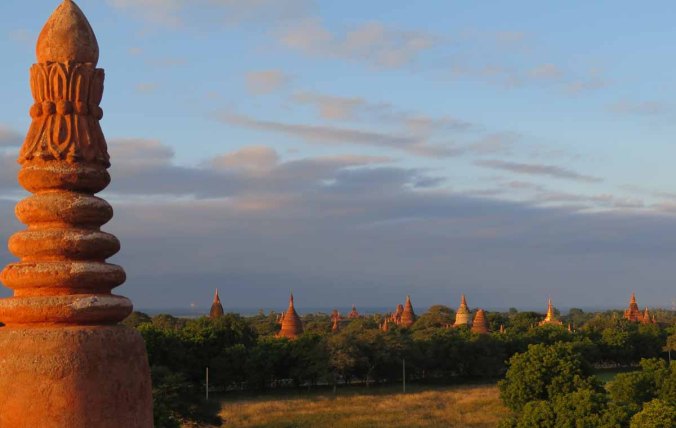
A few people I know said it was a good idea to come to Myanmar now before it’s too touristy, and I think this is good advice for Bagan. Even though my experience was always great, the large crowds for sunrise and sunset on the pagodas just don’t fit with the place.
Many pagodas were damaged in the 2016 earthquake so there aren’t that many left to climb. And with the large number of tourists, there is risk to their structure. So I think this was definitely the right time to visit!



















